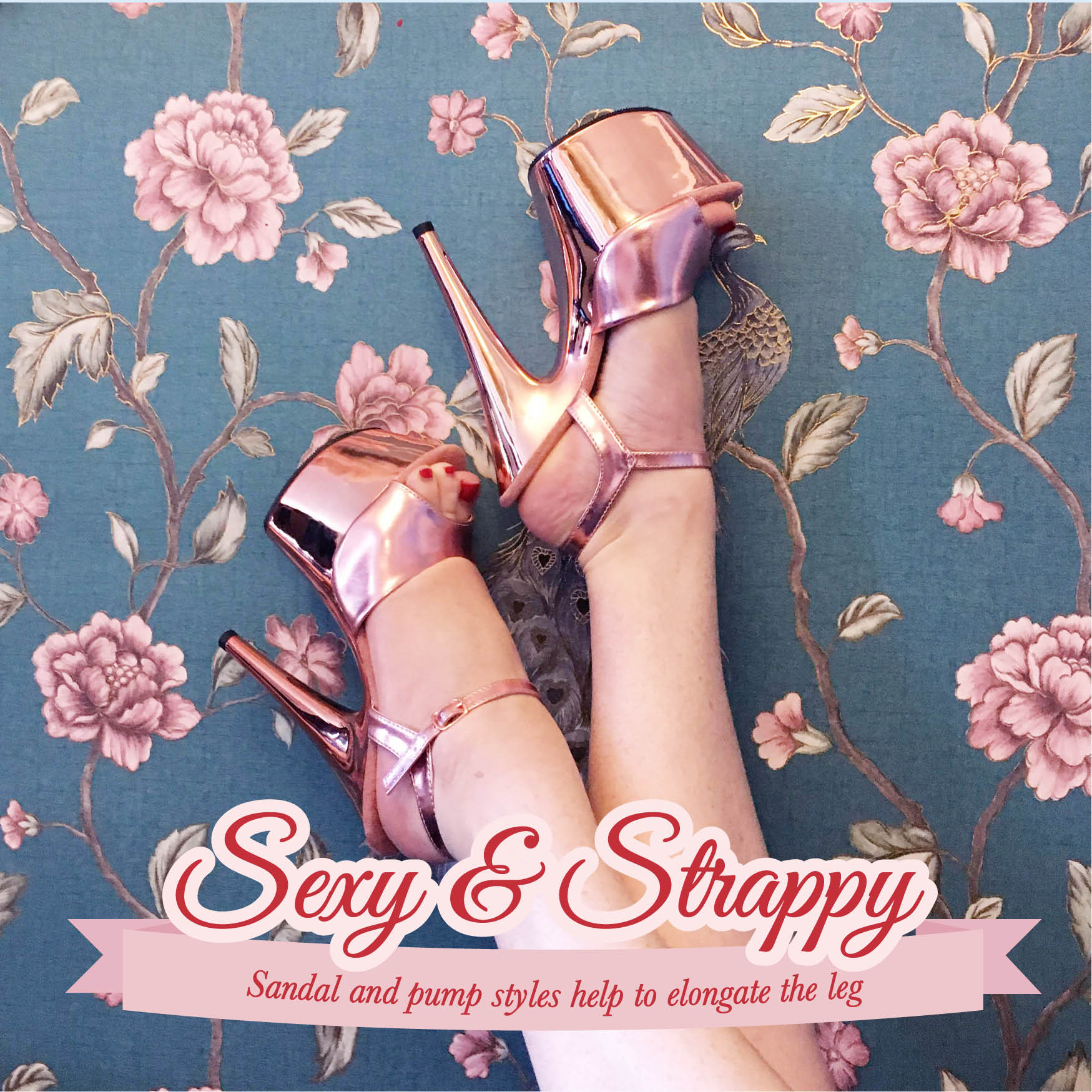"Shoes transform your body language and attitude. They lift you physically, and emotionally" - Christian Louboutin
Words by Eva Devore | Photography by Eva Devore & The Black Light
A question that we often here from our Babydoll pole students is "do we have to wear those crazy shoes?" If you've never seen pole shoes before, they can look a bit scary! Many people often wonder why pole dancers wear these giant platform heels when dancing. But contrary to popular belief, these heels aren't just for show. They have a variety of benefits that help pole dancers to spin, climb and balance when they are performing. Plus, they do look really, really cool.
A pole shoe, sometimes also referred to as "stripper heels" is a high-heeled shoe that comes in a range of sizes, measured in inches. The height in inches refers to the stiletto heel at the back of the shoe. While these shoes are very tall, they are balanced out by a platform sole under the balls of the foot, that can range from between two to four inches high (sometimes more!) The shoes used for dancing often have ankle straps to keep them secure, and a shaped, cushioned footbed. Many people actually find pole shoes more comfortable to wear than normal high heels, due to the cushioning and the fact that the difference between the platform and the heel isn't very steep.
Pole shoes aren't just for looking fabulous though, there are many benefits to wearing them when training and performing on the pole. The elevated platform means you are able to grip higher on the pole, giving you more space to swing and get into the tricks. The shoes also act as weights on your feet, which helps to transition between moves and stretch out the legs in a flattering way. The weight of the shoes can also help you to maintain a great spin on the pole! The bottom of the shoes have a grip finish that will stop you from slipping over, while the rounded shape of the toe box is perfect for spinning on, and for floor work. In our Velvet Vixens Lyra classes, we use pole shoes to create sexy shapes and extensions, and also to create some seriously amazing spins in the lyra!
Pole shoes come in a huge array of styles, colours and designs. From glitter, to crystal diamantes, to fringing or spikes, there are shoes in every colour and style imaginable! Here is some key information on different styles of shoes;
Pole shoes come in a range of heights, from 5 inches all the way to a crazy 10 inches! Most pole dancers like to use a 7 or an 8 inch heel to dance in, as it combines height and ease of movement in a balanced way. If you're just starting out, you might like to play it safe with a smaller 5 or 6 inch heel. It's a good idea to try on some pole shoes to feel the different height and angle combinations, to find the height that is most comfortable for you.
Platforms that are 9 inches and over actually come with a warning on the box saying that they aren't meant for dancing in. Usually only very experienced performers use these shoes, as the danger of falling over is very high!
The classic style of pole shoe looks very similar to a normal high heel shoe style, with a wide strap over the toes, and an ankle strap to hold the shoe on. The straps can be opaque to match the rest of the shoe, or can be made from a clear PVC, which makes legs look super long!
You can get a number of different variations in this style too, including closed toe options. The benefits of this style, apart from the elongating effect, is that you have lots of ankle movement, and can use the fronts of your feet to grip onto the pole. The downfall of this style is that exposed toes may get hurt while you're dancing! The straps can also stretch or snap with lots of heavy use.
For a sexier look, pole shoes also come in a variety of boot styles, in a range of heights and colours. The boots can be calf-high, knee-high and even high-high, and come in a large range of heel heights too.
Boots can be a great option as they give a lot of protection to the feet and ankles, preventing rolling. However, this can lead to weaker ankles if you aren't actively working on strengthening them. Boots can also be a fantastic way to grip the pole, as the patent PVC material is very sticky.
The downside to boots is that the patent material can scuff easily with use. It is also much more difficult to point nicely in boots, due to limited ankle mobility.
Tips for High Heel Beginners
1. If you've never danced in heels before, start with a lower heel height. A 5 inch or 6 inch heel is a great starting point for a Babydoll beginner. A bigger heel size also means a heavier shoe, so make sure you feel confident in the smaller heels before you move up. Once you feel a little more steady and are used to dancing in heels, you can move up to 7 and 8 inch heels!
2. Make sure you get the right size! Many dancers often choose to size down in their pole shoes to make sure they have a firm fit. Slippery, loose pole shoes are a big tripping hazard! You want to make sure the shoes feel nice and tight on your foot, without moving around too much. If the straps feel too tight, you can warm them with a hairdryer to make them more malleable and mould them to your foot.
3. Practice walking and dancing in your heels! The extra weight and height of the heels is going to feel very strange, so make sure you practice walking around in them before you jump on the pole. You can strap your heels on at home and walk around in them while you do household tasks to get used to them. Doing chores never looked so fabulous!
4. Strengthen your ankles! Lots of people find wearing heels difficult because it puts strain on their ankles. This can also lead to injury, by rolling or pulling your ankle. You can do a number of exercises to help strengthen your ankles and keep them healthy and steady. Squats, lunges, heel raises and balancing on one leg all help to build ankle strength and mobility. You can also improve mobility by rotating your ankles in both directions, or by trying to trace out the letters of the alphabet with your big toe. To ease cramping feet after a long training session, try rolling them out using a tennis ball or trigger ball.
5. You MUST point your toes! Floppy or flexed feet and sickled ankles become even more obvious when you are wearing platform shoes. Make sure to keep a nice, strong point, with your knee rotating outwards. You should be engaging all the muscles in your foot, calf and thigh when you point, not just your toes.
Ready to purchase some pole shoes? You can try on our gorgeous range of Pleaser pole shoes in the Parlour at the studio. Just ask our friendly Lady of the House when you visit!
Not ready to dance in heels? Barefoot is okay too!
Just because we love to dance in pole shoes, doesn't mean that you have to! If you aren't ready or don't want to dance in platform shoes, you can still do all the same moves and poses in bare feet too. We usually start all of our beginner pole dancers out in bare feet for the first couple of weeks anyway, as it's much safer for beginners. Your feet can give your body feedback that you cannot feel through plastic or leather. Skin grips amazingly well on a metal dance pole as long it's not sweaty or coated with moisturiser. You can use a grip aid like Dry Hands or Dancing Dust to alleviate any perspiration. If you'd like something to cover your feet without a heel, look into options like leather ballet slippers or lyrical dance shoes (which only cover the toes but leave the foot and heel exposed) or foot pads.





